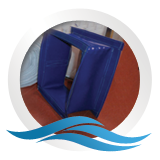1. Introduction to Water-Based Recreation and Industry
Water-based activities and industries encompass a diverse range of human pursuits that involve the use of water bodies such as rivers, lakes, seas, and oceans. These include recreational pursuits like fishing, boating, swimming, and sailing, as well as commercial sectors such as fisheries, shipping, tourism, and maritime manufacturing. Their scope extends from traditional practices to modern innovations, reflecting both cultural values and economic imperatives.
Throughout history, water has played a pivotal role in shaping civilizations, influencing trade routes, cultural rituals, and community development. Today, water-based recreation and industry continue to evolve, driven by technological advances and sustainability concerns. This article explores their historical roots, technological transformations, cultural significance, and future trajectories.
Table of Contents
- Historical Evolution of Water-Based Recreation
- The Rise of Commercial Water Industries
- Technological Innovations Shaping Water Recreation and Industry
- Case Study: The Fishing Industry’s Economic Significance
- Water Recreation as a Cultural and Social Phenomenon
- The Intersection of Industry and Recreation: Modern Trends
- Non-Obvious Aspects of Water-Based Industries and Recreation
- The Future of Water-Based Recreation and Industry
- Conclusion
2. Historical Evolution of Water-Based Recreation
a. Ancient water activities: fishing, boating, and swimming in early civilizations
Ancient civilizations such as Egypt, Mesopotamia, China, and Greece engaged in water activities that served both subsistence and leisure purposes. Archaeological evidence shows that fishing was integral for survival, with early fish traps and hooks dating back thousands of years. Boating was used for transportation, trade, and ceremonial purposes, exemplified by Egyptian reed boats and Greek triremes. Swimming, often linked to religious rituals and training, was practiced in communal baths and natural water bodies.
b. Development during the Middle Ages and Renaissance
During the Middle Ages, water recreation became more structured with the growth of bathing cultures, especially in Europe. The Renaissance period saw the emergence of leisure boating among the aristocracy, with ornate gondolas in Venice and recreational rowing in England. These activities not only represented social status but also contributed to technological innovations such as improved boat designs and safety measures.
c. Industrial Revolution and technological advancements
The Industrial Revolution marked a significant turning point, enabling mass production of watercraft and recreational equipment. Steam-powered boats expanded access to water recreation, while innovations like the paddle wheel and later, internal combustion engines, made boating faster and more accessible. Public beaches and lakeside parks emerged, fostering widespread participation in swimming and picnicking by water.
3. The Rise of Commercial Water Industries
a. Origins of commercial fishing and seafood trade
Commercial fishing originated as communities relied on local water bodies for sustenance. Over time, it evolved into a global industry, with large-scale fleets targeting species like cod, tuna, and shrimp. The demand for seafood drove innovations in catching and processing techniques, transforming fishing from subsistence to a major economic activity.
b. Key innovations: from simple tools to modern equipment
Early fishing relied on basic tools such as spears and nets. The 19th and 20th centuries introduced technologies like the trawl net, sonar detection, and refrigerated ships, vastly increasing catch efficiency. The development of factory ships and aquaculture further expanded industry capacity, illustrating technological progression from manual to mechanized systems.
c. Economic impact: global trade and industry statistics
The global fishing industry was valued at over $240 billion in 2020, supporting millions of livelihoods worldwide. Major exporters include China, Norway, and Chile. For instance, Norway’s seafood exports, notably salmon and cod, significantly influence global markets, exemplifying the industry’s economic importance.
4. Technological Innovations Shaping Water Recreation and Industry
a. Early inventions: the fishing bobber and its Scottish origins
One of the earliest innovations in fishing gear is the fishing bobber, which originated in Scotland during the 17th century. It allowed anglers to detect bites easily and increase catch rates. This simple device exemplifies how small innovations can significantly impact fishing practices.
b. Modern innovations: boats, fishing gear, and safety equipment
Today’s water recreation and industry rely on advanced boats equipped with GPS, fish finders, and safety features like life jackets and emergency beacons. Recreational anglers use high-tech gear such as electronic reels and drone-assisted boats, which expand capabilities while prioritizing safety and sustainability.
c. Digital technologies: apps, GPS, and online marketplaces
The digital revolution transformed water-based activities. Smartphone apps help anglers locate hotspots, log catches, and connect with communities. Platforms like online marketplaces facilitate equipment sales and fishing experiences, exemplifying how technology enhances both recreation and industry.
5. Case Study: The Fishing Industry’s Economic Significance
a. Worldwide scale: total industry value and major players
The global fishing industry employs over 60 million people and contributes approximately $240 billion annually. Key players include China, Norway, and the United States, each with unique specialization in species and markets.
b. Norway’s seafood exports and their global influence
Norway is renowned for its sustainable salmon and cod fisheries, with exports valued at over $10 billion in recent years. These exports influence global prices and supply chains, demonstrating how regional industries can have widespread impacts.
c. How industry growth influences local and global economies
Expansion in fishing and aquaculture sectors generates employment and stimulates related industries such as processing, logistics, and equipment manufacturing. Conversely, overfishing and environmental degradation pose risks, highlighting the need for sustainable practices.
6. Water Recreation as a Cultural and Social Phenomenon
a. Traditional water-based leisure activities across cultures
From Native American canoeing to Japanese onsen bathing, water-based leisure activities reflect cultural identities and historical traditions. Such practices foster community bonds and cultural continuity.
b. The role of water recreation in community building and tourism
Water activities attract tourists globally, supporting local economies. Festivals like Venice’s regattas or Hawaii’s surfing competitions exemplify how water recreation enhances cultural tourism and social cohesion.
c. Modern recreational trends: eco-tourism and sustainable practices
Contemporary trends emphasize eco-tourism, responsible boating, and conservation efforts. Initiatives such as protected marine parks and sustainable fishing certifications aim to balance recreation with environmental stewardship.
7. The Intersection of Industry and Recreation: Modern Trends
a. How recreational fishing complements commercial industry
Recreational fishing often supports local economies and promotes conservation awareness. It can serve as a gateway for sustainable industry practices, with anglers advocating for fish stock management and habitat protection.
b. The emergence of themed products like «Fishin‘ Frenzy»
Modern entertainment and gaming often draw inspiration from traditional fishing, blending industry and recreation. For example, the fisherman catches fish! in online slots exemplifies how cultural principles of fishing are adapted into digital entertainment, illustrating the timeless appeal of water-based pursuits.
c. Impact of industry on recreational practices and vice versa
Commercial innovations influence recreational gear and techniques, while recreational demand drives sustainable industry growth. This dynamic fosters a cycle of technological advancement and environmental consciousness.
8. Non-Obvious Aspects of Water-Based Industries and Recreation
a. Environmental impacts and sustainability challenges
Overfishing, habitat destruction, and pollution threaten water ecosystems. Addressing these requires sustainable harvesting, protected areas, and pollution control measures, emphasizing that responsible practices are crucial for long-term vitality.
b. Regulatory frameworks and international cooperation
International agreements like the United Nations Fish Stocks Agreement aim to regulate fishing and conserve aquatic biodiversity. National policies further enforce sustainable practices, illustrating the importance of cooperation across borders.
c. Future technological and societal shifts influencing water activities
Emerging innovations such as eco-friendly propulsion systems, AI-driven monitoring, and blockchain for traceability will shape the future. Societal shifts toward sustainability and responsible consumption will influence industry standards and recreational priorities.
9. The Future of Water-Based Recreation and Industry
a. Innovations on the horizon: eco-friendly boats, sustainable fishing methods
Future watercraft may utilize solar or hydrogen fuel, reducing emissions. Sustainable fishing techniques, such as selective gear and aquaculture innovations, aim to minimize ecological impacts, aligning recreation and industry goals.
b. Potential shifts in consumer behavior and industry adaptation
Growing awareness of environmental issues will prompt consumers to prefer eco-certified products and experiences. Industries will adapt by integrating sustainability into branding and operations.
c. Role of education and technology in promoting sustainable practices
Educational programs and apps can raise awareness about conservation and sustainable water activities. Technology-driven tools will facilitate responsible participation, ensuring the longevity of water ecosystems and recreation.
10. Conclusion
From ancient fishing techniques to modern digital platforms, water-based recreation and industry have evolved in tandem, shaping societies and economies across centuries. Embracing sustainable practices ensures these activities continue to thrive, fostering a harmonious relationship with our aquatic environments.
As we reflect on this journey, it’s clear that water remains a vital resource for both leisure and livelihood. Responsible engagement and technological innovation will define the future, ensuring that generations to come can enjoy and benefit from our vital water ecosystems.


